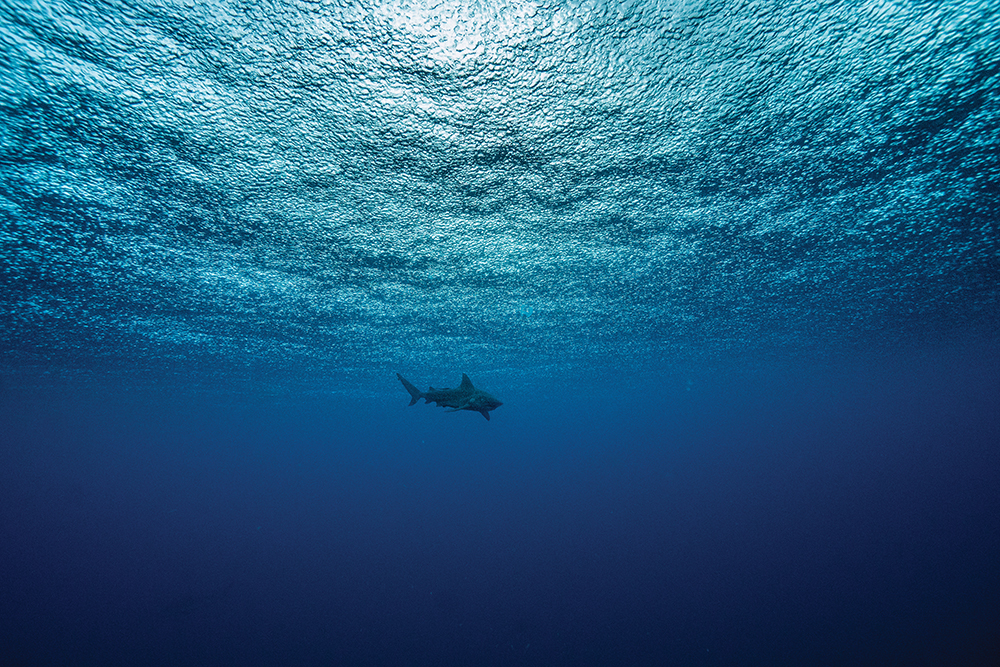From the Deep: Shark Teeth on the North Carolina Coast
For immediate release ‐ July 10, 2023
Contact: Jon Pishney, 919.707.8083. Images available upon request
Our state is a hotspot for discovering fossilized shark teeth. We talked to an expert to learn why — and get some tips on how to find them.
by Emma Deal, Nelie Tahssili & Eliza Martin
 Shark in the water. Photo: Joshua Steadman.
Shark in the water. Photo: Joshua Steadman.
Among our bragging rights here in Raleigh, we like to remind folks that when the going gets hot, it’s a quick trip out to the beach for some relief. And if you’ve taken a stroll along a North Carolina shore, you may have uncovered another one of our treasures among the shells: shark teeth. From itty-bitty serrated triangles to ancient megalodon chompers as big as your head, it’s not uncommon to find fossilized shark teeth tucked among the sand and shells.
“Fossil shark teeth can be found on many beaches around the world, but our state is a particular hotspot,” says Dr. Christian Kammerer, research curator of paleontology at the North Carolina Museum of Natural Sciences. We talked to him to find out why — and how to find them.
Why do North Carolina shores have more shark teeth than others?
This is because of a mix of geography and geology — basically, rocks of the right age are exposed coastally below the waterline. Erosion, for example by wave action, pulls fossils out of these rocks and then they are redeposited on the shore. There are particularly extensive sub-aqueous outcrops of fossil-bearing sediment containing marine fossils from the Cenozoic Era, the age of mammals, off portions of the Carolina coast, so we get lots of shark teeth on the beaches.
Read the full article on Walter Magazine
For more information about our upcoming activities, conservation news and ground-breaking research, follow @NaturalSciences on Instagram, Twitter and Facebook.

